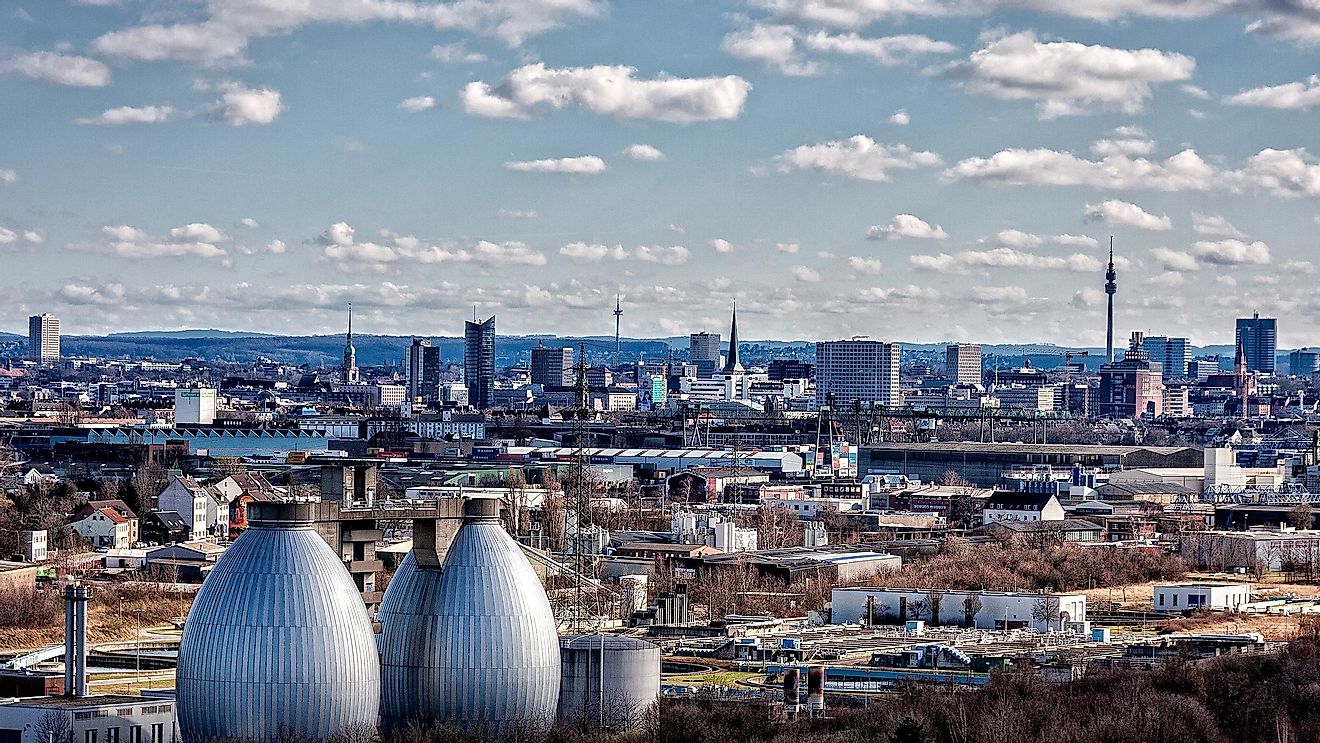Ruhr Valley, Germany

5. Description
The Ruhr Valley in Germany, which encompasses the industrial cities of Bochum, Dortmund, Duisburg, Essen, and others, is one of the most industrialized areas of the country. Cities, residential suburbs, and open crop fields in the Ruhr Valley interconnect with each other making borders indiscernible. The rivers Ruhr, Rhine, and Lippe all form part of the natural boundaries of the valley. The Ruhr Valley belongs to the Rhine-Ruhr metro area which is located in the North Rhine-Westphalia region. It hosts about 8.5 million people who are part of the 12 million strong population of the Rhine-Ruhr region.
4. Historical Role
The origins of the Ruhr started as part of the County of Mark, a part of the Holy Roman Empire. Parts of the territory of the Ruhr was also shared by duchies, archbishop of Cologne, and bishop of Münster. Palaces and churches dotted the region. It was mainly an agrarian economy and like today, one of the important economic centers of the past. The last quarter of the 18th century ushered in economic prosperity with the introduction of manufacturing and processing of iron, shingles, lumber, and textiles. Coal production also increased to keep up with the industrial demand that followed. Soon a port and railway were built to transport coal in the late 19th century. Large migrations from surrounding areas followed to fulfill the need of skilled workers in the Ruhr Valley. World War I saw the Ruhr Valley as the center for weapon production. Close at the war's end, the area was occupied by the Allied forces.
3. Modern Significance
The Ruhr Valley's industries today contributes about 15% of Germany's GDP. Two of its biggest contributors are the cities of Cologne and Dusseldorf followed by Bonn, Dortmund, and Essen. Companies such as the Henkel Group, Düsseldorf; Hochtief AG, Essen; Deutsche Post AG, Bonn; Evonik Industries, Essen; ThyssenKrupp AG, Essen/Duisburg; Deutsche Telekom AG, Bayer AG, Leverkusen; Metro AG, Düsseldorf; and Franz Haniel & Cie. GmbH, Duisburg are all located in the Ruhr Valley region. These German companies belong to the Fortune Global 500 companies. Four international airports serve the Ruhr Valley today with a host of small airports in the suburbs. Transport systems including trams, a commuter train system, buses, U-Bahn and S-Bahn services, serve the valley. The Dortmund Port and the Duisburg Port serve as inland ports in the Rhine.
2. Habitat and Biodiversity
An oceanic climate influenced by the Atlantic dominates the Ruhr Valley region. It has shorter summer sunshine hours with cloudy days that has temperatures in the low 20's. Winter temperatures just hover above the freezing point. Its habitats range from marshes, wetlands, meadowlands, river arms, to ponds. Old abandoned mining and steel production areas have created new types of habitats that are being studied today. Equally, urban parks and colliery spoil heaps are the other two man-made habitats inhabited by birds and beetles. Trees in the areas include poplar, maple, birch, oak, horse chestnut, and plane trees. Animals such as bears, boars, and deer roam the area. In the wild, migratory and breeding birds call the region home. Amphibians and insects such as dragonflies abound.
1. Environmental Threats and Ongoing Development
Conservation efforts in Germany include the conversion of 62 ex-military bases into nature conservation reserves. These areas are now the havens for the protection of endangered animal and plant species. The Ruhr Valley has converted the military bases into woods, bogs, sand dunes, moors, and heathlands that offer sanctuary to flora and fauna. Motocross bikers that use some of the protected areas as practice tracks pose a threat to the animals and plants of the area. The bikers themselves are also at risk from the unexploded ordnance at the ex-military sites. Foresters in the area have also encountered aggressive bikers threatening to run them down. Damaged sand dunes are being washed away by rain as the bikers' tire tracks loosen the sand that eventually wash down the hillsides. Conservation authorities are thus working tirelessly to ensure stricter rules are implied, and the protected areas of the Ruhr Valley are conserved well.







